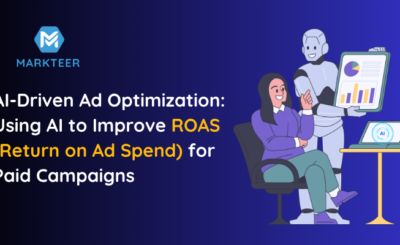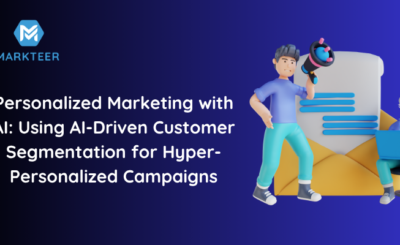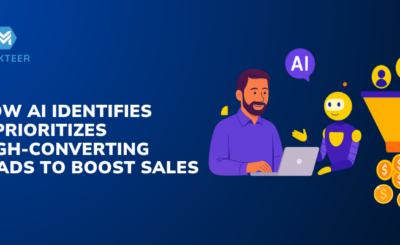2025 marks a transformative phase for mobile and web applications, with artificial intelligence (AI) emerging as the cornerstone of modern app development. From enabling real-time decision-making to generating content, AI in mobile apps shapes user expectations and business outcomes.
As developers and organizations strive to enhance app intelligence, accelerate time-to-market, and personalize user experiences, staying current with the latest AI app development trends in 2025 is crucial. Here’s a deep dive into the most critical innovations driving this AI-first era.
The Evolution of AI in App Development
AI’s integration into app development has evolved from basic automation to the use of deep neural networks, which power everything from recommendation engines to AI-driven content creation. In the early stages, AI was used to automate customer support or recognize speech. In 2025, it will enable intelligent personalization, on-device processing, and autonomous systems.
According to Gartner, by the end of 2025, more than 80% of apps will feature embedded AI capabilities, whether conversational interfaces, predictive analytics, or generative tools. The convergence of AI with cloud computing, edge devices, and no-code platforms has made it more accessible.
Can AI Truly Deliver Personalized User Experiences at Scale?
Absolutely. One of the most impactful AI app development trends in 2025 is AI-powered personalization. Today’s AI systems can analyze user behavior in real-time, tracking clicks, scrolling behavior, past usage, and even location, to deliver tailored content to each user.
For instance, e-commerce apps recommend products based on browsing history, time of day, and prior purchases. Streaming services like Netflix and Spotify utilize AI models to curate personalized playlists and shows. Fitness apps adjust workout routines based on a user’s energy, mood, and preferences.
A report by McKinsey shows that AI-led personalization can increase user engagement by up to 40% and drive 5–15% more revenue. The scalability of AI models enables millions of users to enjoy uniquely personalized experiences simultaneously.
AI-Powered Voice and Chat Interfaces
The rise of conversational AI has redefined how users interact with applications. Tools like GPT-4o, Claude, and Gemini have introduced multi-turn conversations, emotion-aware dialogues, and context retention in voice and chat interfaces.
Voice assistants in banking apps handle fund transfers and FAQs. Healthcare chatbots assist with medication reminders and symptom assessments. Educational apps now feature intelligent AI tutors capable of resolving doubts in real time.
Statista estimates that by 2025, over 8.4 billion digital voice assistants will be used globally. As a result, conversational AI isn’t just a trend—it’s becoming the default interface for AI-first applications.
How Is Predictive Analytics Transforming Mobile App Functionality?
AI-driven predictive analytics empowers apps to become proactive rather than reactive. It utilizes historical data, behavioral patterns, and contextual signals to forecast user behavior and provide recommendations, even before the user takes action.
In finance, apps like Mint predict overspending and suggest budgeting solutions. Travel apps forecast flight fare trends and notify users when to book. Content platforms use predictive engines to push news and videos tailored to users’ moods or habits.
According to Salesforce, predictive analytics increases customer retention by 22% and boosts click-through rates by over 30%. For developers, this means delivering intelligent, engaging user journeys that anticipate user intent.
Generative AI Integration in App Features
The most revolutionary trend in 2025 is the seamless integration of generative AI in apps. These models can write, draw, animate, compose, and even develop code, creating content dynamically in response to user input.
Design apps like Canva use generative AI to build visual assets. Tools like Jasper and Copy.ai enable users to generate marketing content quickly and efficiently. Even video creation apps allow users to upload a script and create explainer videos with AI avatars.
A 2024 report by Data.ai projected that over 60% of consumer-facing apps will include generative AI features by mid-2025. These capabilities revolutionize media, e-learning, marketing, and customer service.
Edge AI for Real-Time Processing
With growing concerns around latency and data privacy, edge AI is quickly gaining traction in app development. Unlike traditional AI, which relies on cloud computing, edge AI processes data locally on the user’s device, allowing for real-time intelligence and offline functionality.
Use cases include:
- Healthcare wearables that monitor vitals and provide alerts.
- Smart cameras that detect motion, recognize faces, and issue alerts instantly.
- Gaming apps that respond in real-time to user inputs without cloud delay.
Low-Code/No-Code AI App Development
Low-code and no-code AI platforms are revolutionizing app development in 2025. Tools like MightyApps.ai, Microsoft Power Automate (formerly known as Microsoft Power Apps), and Google AppSheet enable users to build intelligent apps using drag-and-drop interfaces, pre-built AI features, and automated workflows—no coding required. MightyApps.ai especially empowers startups to launch scalable AI-powered apps quickly and efficiently.
These tools are enabling.
- Small businesses should automate their CRM and logistics.
- Educators are creating AI-powered tutoring apps.
- NGOs to deploy survey and data analysis tools without developers.
Forrester Research predicts that 70% of all new apps developed in 2025 will utilize low-code or no-code tools. This democratization of AI app development is leveling the field for innovation across industries.
Also Read: Benefits of Custom Mobile App Development for a Business
How Are AR/VR Apps Being Supercharged by AI?
Combining AI and AR/VR creates a new wave of immersive, intelligent experiences. AI enhances AR/VR by enabling gesture recognition, scene understanding, voice interaction, and dynamic content adaptation.
In retail, AI allows virtual try-ons based on user body data. Real estate apps provide customized virtual tours. In healthcare, VR-based training tools use AI to provide real-time guidance during surgical simulations.
projects the AR/VR market to hit $160 billion by the end of 2025, with AI integration playing a significant role in this growth. This presents a massive opportunity for developers to blend spatial computing with innovative interactivity.
Conclusion
As we enter 2025, it’s evident that AI is not just a trend—it’s the core of modern app innovation. From personalized user experiences and voice interfaces to edge processing and generative content, AI is redefining every layer of the app development lifecycle.
Businesses and developers that embrace these AI app development trends will meet user expectations and lead the next era of intelligent digital experiences. The time to think AI-first is now because tomorrow’s best apps are already being built with it.
“Looking for a low-code or AI-integrated mobile solution? Markteer transforms bold ideas into intelligent digital products.”
Frequently Asked Questions (FAQs)
What are the top AI trends in app development in 2025?
AI personalization, conversational AI, predictive analytics, generative AI, edge AI, and low-code/no-code tools.
How is AI improving user personalization in mobile apps?
AI tailors content based on real-time user behavior, boosting engagement and satisfaction.
How does predictive analytics enhance app functionality?
It forecasts user behavior to offer more intelligent recommendations and improve retention.
Can their AI tools integrate with my existing CRM?
Absolutely! Many of Marketeer’s AI solutions, including job-matching and real estate tools, integrate seamlessly with popular CRMs and Applicant Tracking Systems.
How can AI improve customer engagement?
AI enables 24/7 support, personalized communication, real-time responses, and more intelligent recommendations, improving user satisfaction and retention.




